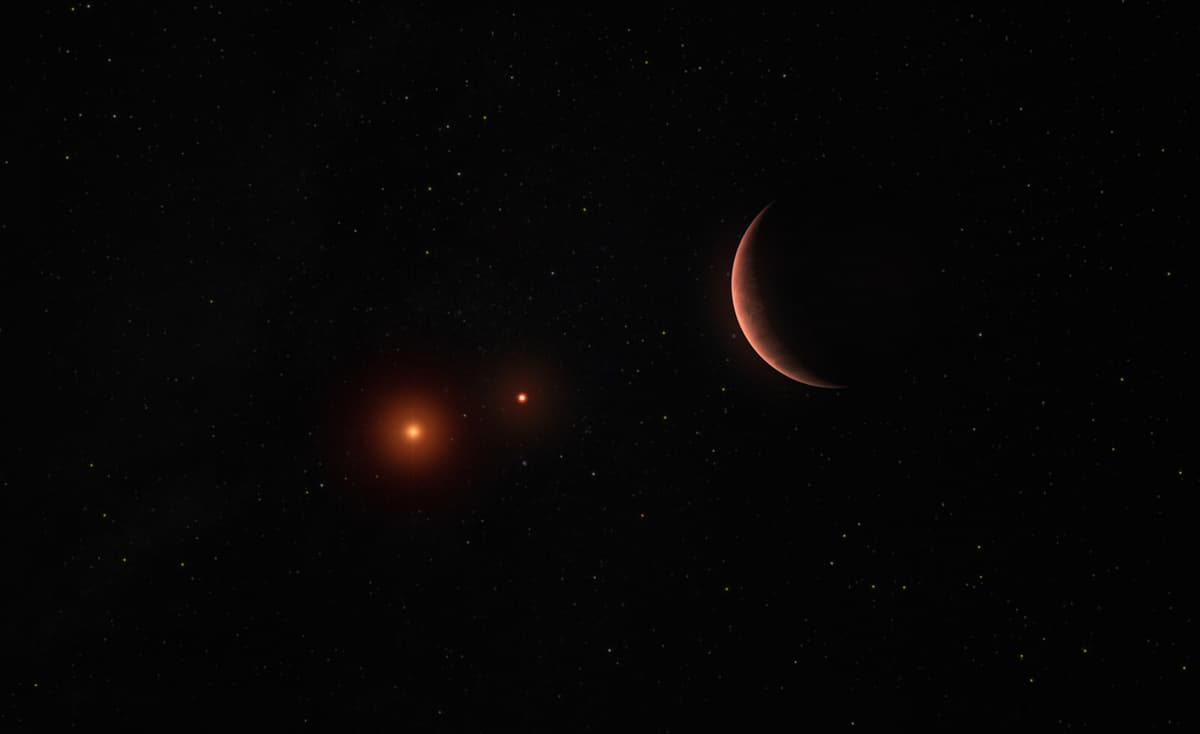The name of the planet is 2M1510, which was discovered with the help of the giant telescope VLT in Chile.
It's hard not to think of Tatooine when you have planets orbiting two suns, says Amaury Triaud, who is a professor of exoplanetology at the University of Birmingham, and refers to Luke Skywalker's home planet in the "Star Wars" universe.
But maybe 2M1510 is even more special. It orbits around two brown dwarf stars, something the research world has not known any example of. A brown dwarf is midway between a normal star and a planet in size. It is not large enough to burn like the sun, but uses another type of fusion that makes it cooler.
That means it looks redder and doesn't emit as much light, he says.
A possible explanation
The researchers followed the dwarfs for a long time and noticed something strange. They "wobbled" in a way that is often a sign that a third object is affecting the system.
So we suspected immediately that we had hit on something really cool, even if it wasn't the goal of our research. So we looked at the data and tried to find an alternative explanation.
In the end, only the possibility remained that it had to be a third object around this brown double star.
So what does the sky look like when you're on the planet's surface?
We don't know how far the planet is from the stars. But if the planet is close, it looks like two reddish suns, maybe as bright as a full moon.
Special orbit
What also stands out is the planet's orbit. If you think of our solar system, all planets are in the same plane. In this case, the two stars move in the planet. However, the planet moves in an almost perpendicular orbit, around the sun's poles. Why? The researchers don't know.
We have to find other systems in different stages to really understand what happened, says Amaury Triaud.
Two suns create chaos with their forces in the solar system, which researchers previously believed would make it difficult for planets to form. But researchers find planets almost as often in such systems as those with only one star.
Now Triaud hopes to investigate how it can be possible.
I hope people understand how beautiful and varied the universe is, he says about the finding.
The space instrument VLT is what it's called, a very large telescope in the Atacama Desert in Chile, which the European Southern Observatory operates.
It consists of four telescopes with mirrors 8.2 meters in diameter and four movable auxiliary telescopes, which together pick up details that would not be possible with the individual telescopes.
The study in question has been published in Science Advances.





